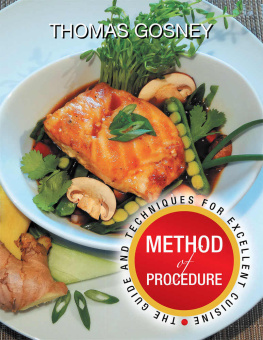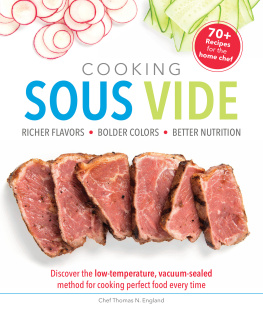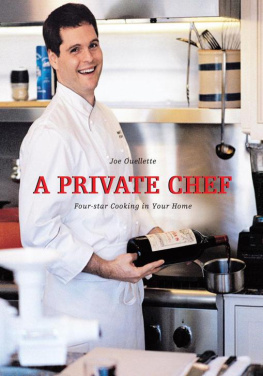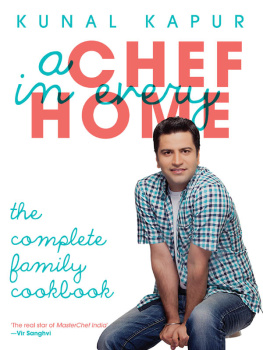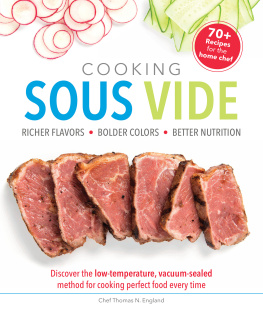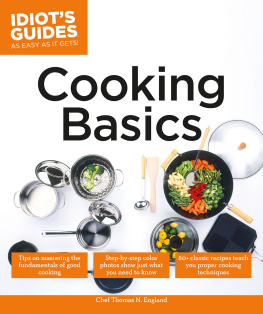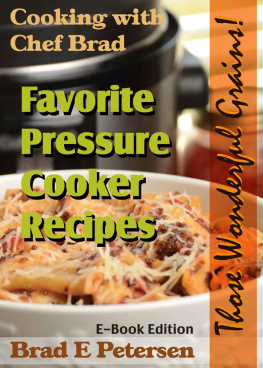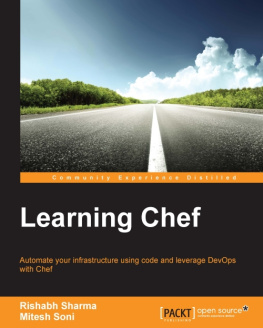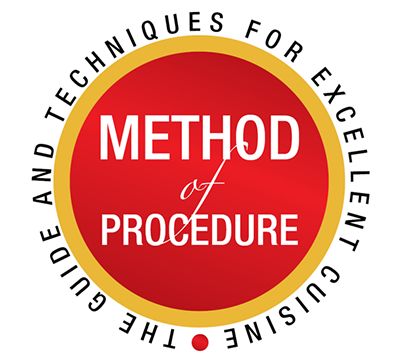
BY: CHEF THOMAS GOSNEY
Copyright 2015 by Thomas Gosney. 550138
Library of Congress Control Number: 2015902226
ISBN: Softcover 978-1-5035-4342-3
Hardcover 978-1-5035-4341-6
EBook 978-1-5035-4343-0
All rights reserved. No part of this book may be reproduced or transmitted in any form or by any means, electronic or mechanical, including photocopying, recording, or by any information storage and retrieval system, without permission in writing from the copyright owner.
Rev. date: 04/15/2015
Xlibris
1-888-795-4274
www.Xlibris.com
Contributing Photographer: Jennifer Bowen
TABLE OF CONTENTS
The guide and techniques for preparing excellent cuisine.
Lifelong tips and secrets on preparing a wide variety of traditional family recipes, along with fast and exciting new healthy recipes that your family will love!!! Fully detailed instructions on how to prepare the recipe correctly, time and time again.
Chef Thomas Gosneys personal notes for every recipe. Johnson and Wales Graduate, AAA five Diamond corporate hotel chef. Over 16 years as a private chef for high profile clientele. Giving an insight into Thomas Gosneys private tricks and tips for executing excellent cuisine!
Most of all I would like to start out with my grandmother, Helen Ling Gosney; you are the reason for who I am today. I hope you are watching me shine, God Bless You. To my mother, Barbara Lee Finfrock Gosney, you are one of the other reasons and also to Pop, my dad, Bob Gosney.
To Suo Kim, I will always love you. And to all of her family Jue,Kofi, Maya, Nalani,Zion, and Insoo, my other brother.
To all of my family members who put up with me through the years. Jim Gosney, Barb, Jessica, Sarah, Sue Bingnear, Mike, Brandon, Jack Topchik, Aunt Butch, Carol Lee, Mike, Jeff and your beautiful families. Also to Debbie Finfrock, Gwen Gardner, Nancy Gosney, David, Diane and Allison. To my daughter, Allyssa Nicole Funk Barrett, call me and let me know how you are doing. To Dave Bingnear, who got me my first real job.
Tim Habbart, who trained me. Steve Warner, who had faith in me. Carol Cillaberti, Jeff Demagestrie and all of my Unionville High School, Pa. friends, John Roberts, and Zeek Hubbard, my guitarist. And to Julie Taylor, my first love. To all my chefs that taught me at Johnson and Wales University, Providence, Rhode Island. To my chefs at the Hyatt Grand Cypress, Orlando, Florida; Rene Mettler, Marco Barbitta and Kenneth Juran. Pam Smith, nutrionist, we started something terrific!
To BIG and all my TWISM family, especially Lucille ONeal Harrison, we still have a book to do together. Also Joe Cavallerro, my hunting buddy. Mike Wise, New York Times, Joy Bauer, nutritionist. Bill Brown, Jennifer Bowen, my photographer. To anyone else that I forgot that touched my life, I love you all.
Most of all I dedicate this to my son, JAIDEN THOMAS GOSNEY. While you were a baby I began writing this book late at night. Between the bottles and diapers I typed and typed, sometimes when I held you in my arms. When you were six, you asked me, Dad, are you almost done, so we can play? I dedicate this book to you. I LOVE YOU! You are my heart and soul, Thomas.
The proper way to make any broth, is to make a stock. Most sauces are made from stocks but dont have to be. Any good soup has to begin with a great stock. The process is basic. To extract as much flavor as you can from bones, shells, vegetables, herbs and spices. The process of taking water, and make it so flavorful you want to drink it by the cupful. Basically beef, chicken, and fish bones, shrimp shells, and lobster shells have all of the flavor. This is everything that most people throw away. Most people buy meat, chicken, and fish with the bones removed nowadays. Strange why we pay more money to throw away the flavor? The butcher ends up selling it to people like me. Understanding what to do with it is most peoples problem. In big kitchens NOTHING is wasted. All scrap vegetables; bones or shells are thrown into the stockpot throughout the day. There are different stocks cooking on the stove all day, every day. Most soups of the day are created to utilize leftovers. There are many good canned broths on the market, but nothing can compare to your own. Use items that you like and customize the stocks to you. Adding your personality to your broths, soups, and sauces will bring your food to a new level. Finding a recipe and sharing it with your family is rewarding. Having the family love the food and incorporating the recipe into the familys history is what you want. The main components of any stock starts with a LIQUID, usually water but not always. Second is VEGETABLES celery, onions, mushrooms, garlic, leeks, and sometimes carrots. I dont use bell peppers in stocks because I find them too bitter. BONES and SHELLS provide the stock with the corresponding protein flavor necessary. It is not always necessary to use bones or shells for a stock. Using vegetables and aromatics can produce wonderful stocks. I recommend using old corncobs when doing a vegetable stock. AROMATICS. Salt, peppercorns, bay leaf, herbs and spices give the stock flavor and depth. ACID is also important to a stock. Acidic items are wine, citrus fruit, and tomato products. Fresh tomatoes are fine to use anytime. Ketchup, and hot sauce are also forms of acid. They help break down the proteins in the stock and impart a great flavor. The first thing to making a good stock is to start with a good pot. A large one with strong sides and a thick bottom. Start the stock with cold liquid. Saut the vegetables, brown the bones in most cases. Bring the liquid up to a full boil, reduce heat. Simmer usually for 1-1/2 hours to extract all of the flavors. Beef and veal stocks take a little longer, usually 2-1/2 hours. Fish stocks require a slow simmer. If it boils too rapidly, it will become cloudy. Skim the stock several times, removing the fat and impurities that form on top. Use a large ladle and try to just take the surface of the stock. Taste the stock before removing it from the stove. Make sure it tastes good. Properly seasoned, but never too salty. Remove from heat, strain, and cool. Making stock is easy once you do it. Stocks are the backbone of good cuisine.
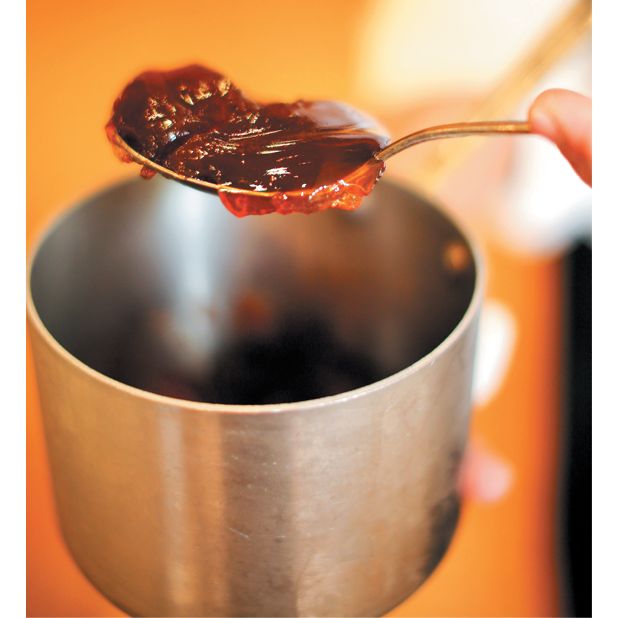
2 lb. | Chicken Back Bones, or 2 lb. Chicken Bones |
1 gal. | Cold water |
3 stalks | Celery, rough chopped |
| Carrots, rough chopped |
| Onion, peeled, rough chopped |
| Mushrooms, rough chopped |
2 cloves | Garlic, peeled, rough chopped |
2 tbsp. | Olive oil |
AROMATICS:
| Bay Leaf |
2 sprigs | Thyme, or 2 tsp. of Dried Thyme |
| Whole Peppercorns |
| Parsley Stems |
1 tsp. | Kosher Salt |
ACID:
| Tomato, rough chopped |
cup | White Wine or Vermouth |
3 shots | Hot Sauce |
In large stockpot on medium high heat, saut chicken bones in olive oil. When browned add vegetables, except for the garlic and tomatoes. Saut vegetables for 2 minutes until translucent. Add garlic, saut 1 minute. Add tomato, white wine, reduce 1 minute. Add water, hot sauce, salt, peppercorns, thyme, parsley, and bay leaf. Bring the pot to a boil, reduce to a simmer. Simmer gently for 1-1/2 hours, skimming the surface for grease, and foam off the top. Repeat the process 2-3 times while simmering. Taste for flavor, add salt as needed. Remove from heat. Pour through fine strainer into containers. Utilize for a recipe, or cool as quickly as you can. Refrigerate, or freeze as soon as possible.

